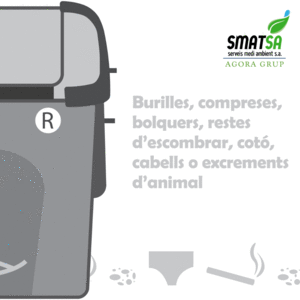Perfunctory affiliate program supervision won’t cut it – you must dig deep into affiliate data to nip affiliate fraud in the bud. For that, you need two components:
- Exhaustive knowledge of affiliate fraud and how to prevent it
- Automated affiliate marketing software for affiliate fraud prevention and compliance
Without further ado, let’s take a walk through an unpleasant realm of affiliate fraud and see how you can mitigate risks and ensure compliance for your affiliate network.
Uncover the multiverse of affiliate marketing in this comprehensive 33-minute read.
Is Affiliate Fraud Really That Dangerous?
Affiliate fraud demolishes affiliate networks like a wrecking ball, causing unrecoverable financial and – most of all – reputational damage. If your affiliates cheat, there’s only one way to protect your business: remove these affiliates from the network. Get the most professional and expert assistance by reading this Mosiac article on affiliate fraud prevention.
The Dangers of Affiliate Fraud
| Drained Budgets | Focused on receiving undeserved commissions, fraudsters drain advertisers’ budgets while providing little to no value in return. As a result, advertisers cannot break even, let alone grow their bottom line, losing faith in their affiliate network. With digital ad fraud alone costing an arm and a leg to victims – around $100 billion in 2023, according to Statista – very few advertisers are willing to splurge on untested marketing methods, when they cannot be sure their investment will pay off. |
| Misplaced Attribution | Not only does affiliate fraud drain budgets, but it also distorts attribution, assigning customers to the wrong affiliates. Unable to track your affiliates properly, you can’t develop effective marketing strategies and maximize your ROI. |
| Reputational Damage | Precarious affiliate networks are losing their ranks like never before. Walking on thin ice all the time is too burdensome for advertisers – they’d rather seek an alternative network than accept multidimensional risks. |
| Compliance Issues | Using stolen information to generate call leads, fraudulent affiliates may expose you to the Telephone Consumer Protection Act violation with all ensuing consequences. |
Scourged with fraud, an affiliate network dies slowly like a fly in the spider’s web unless it quickly cleanses itself off untrustworthy affiliates and implements robust fraud protection measures.

Source: Anura
But before you can do something about it, you must know your enemy.
To help you gauge the effectiveness of your fraud prevention measures, we’ve introduced a brand-new tool: the Marketing Fraud Prevention Proficiency Quiz.
Take the Quiz
Lead Generation Fraud
As leads remain the marketing Mount Rushmore, your Pay Per Lead affiliate program – or any other lead-reliant program you run – must ensure an unceasing influx of leads and a decent conversion rate: around 2.5% for e-commerce. For that, you must eliminate or at least mitigate the scourge of affiliate marketing – lead fraud.
- Combating lead fraud will help you win the trust of advertisers and affiliates whose customers feel unprotected. Only 36% of shoppers in the United States believe their merchants can prevent e-commerce fraud: close that gap, and you’ll grow your bottom line.
Lead fraud takes many forms, the most common of which is misrepresenting how leads were collected or who they really are. Fraudsters are eager to exploit everything and everyone, from advertisers to affiliate networks to customers who unknowingly expose their personal details.
Lead Gen Fraud Strategies
| Fake Leads | As detectable as fake leads may seem, they mask themselves by simulating engagement, submissions, clicks, and installations from fake leads. Most affiliate networks never know which lead is fake unless they’ve spotted the overall decline in the performance of a particular affiliate. |
| Misleading Offer | Unscrupulous affiliates love to exploit buyer psychology by misrepresenting the advertiser’s offer. For example, they may add non-existing incentives, cut the price, or create FOMO that has nothing to do with the real offer. Most deceptions are revealed too late – if revealed at all – when the money is gone. Read Indeed’s guide on understanding buyer psychology. |
| Recycled Leads | While affiliates can legally sell shared leads under full disclosure, some secretly resell their leads, especially low-intent or irrelevant leads. Presented as new customers, repurposed leads bring little to no profits while triggering a regular reward. |
| Farmed Leads | Lead fraud has come to the length that there are full-scale lead farms that produce fraudulent leads and exchange favors. Such farms share expertise and develop sophisticated strategies to avoid detection, posing a significant challenge to affiliate networks. |
| Mixed Leads | Resourceful fraudsters often mix genuine leads – bought from legitimate publishers – with fraudulent leads within the compliance threshold. Executed within the admissible margin, lead mixing is almost impossible to spot because low-quality leads are perceived as a part of the game. |
Lead gen fraud is detrimental, if not deadly, for it drains the budget and leads to an unrecoverable loss of credibility. Having sustained heavy reputational damage, compromised affiliate networks may never come back and even face compliance and legal issues.
Want to know more about lead generation fraud? Learn how lead gen fraud affects brands and consumers.
How to Prevent Lead Generation Fraud
While the result of spotting lead gen fraud is clear – banishing the bad actor from the affiliate network – the detection algorithm may vary depending on your technical capabilities and the affiliates you unite. Like any fraud, lead fraud is tied to money, making abnormal marketing and sales a surefire fraud indicator.
- Unusual or same IP addresses, high refund rates, inorganic traffic sources, suspicious demographics, low engagement levels, and dubious conversion patterns are huge red flags that usually signify lead gen fraud.
To protect from lead gen fraud, you need a complex set of measures for lead tracking, distribution, and analytics. In other words, you need to know your affiliates and their customers in the first place.
- Comprehensive lead tracking and distribution systems like LMS Sync will take your lead management to the next level by providing in-depth lead analytics and real-time reports. And if you want to go further, LMS Sync can integrate with other proprietary solutions for clicks, calls, email, and more to create an automated marketing ecosystem for your affiliate network.
Click Fraud
Click fraud involves generating paying clicks through bots, click farms, and scripts, making them appear genuine while snatching the commission. In the affiliate marketing industry, around 14% of all clicks – data from ClickCease – come from non-genuine sources, with 90% of all PPC ad campaigns affected by click fraud.
Click fraud undermines the integrity of an affiliate network by rendering click data unreliable and ineffective. In the worst-case scenario, click fraud drains an advertiser’s budget, driving a wedge between them and their affiliate network.
How To Spot Click Fraud
| Abnormal CTR | A significant deviation from a normal CTR can be a sign of click fraud, when users enter the website only to leave it quickly. Likewise, unprovoked fluctuations in CTR and a disproportion between CTRs across marketing channels may also signify affiliate fraud. |
| Short sessions | Lack of engagement from referrals coming from an affiliate, especially when other affiliates perform well, may also point to click fraud. Genuine users tend to explore a website before leaving, whereas irrelevant users or bots leave a website instantly or without interaction. |
| High bounce rate | With an optimal bounce rate of around 20% to 40% – an estimate by HubSpot – anything over 70% is a red flag. Even if the cause isn’t affiliate fraud, a high bounce rate is worth exploring and countering. |
How To Protect Your Affiliate Network From Click Fraud
To shield your affiliate network from click fraud, you need a set of overlapping measures:
- Examine your traffic sources: In addition to prohibiting illegal and dubious traffic sources, spot-check your affiliates so they know they are under surveillance. Lack of transparency and affiliate fraud go hand in hand.
- Encourage long-tail keywords: Encourage keywords that accurately reflect the gist of the promotion to make it harder for affiliate crooks to get to you. More often than not, affiliate fraud has to do with expensive (branded) keywords.
- Implement click validation tools: Don’t attribute clicks blindly – validate them before counting toward an affiliate. Validation may include verifying the IP address and running clicks through your checklist of fraudulent resources.
Today’s affiliate tracking software offers a coherent fraud prevention ecosystem around marketing data, customer behavior patterns, and other AI-driven capabilities.





















